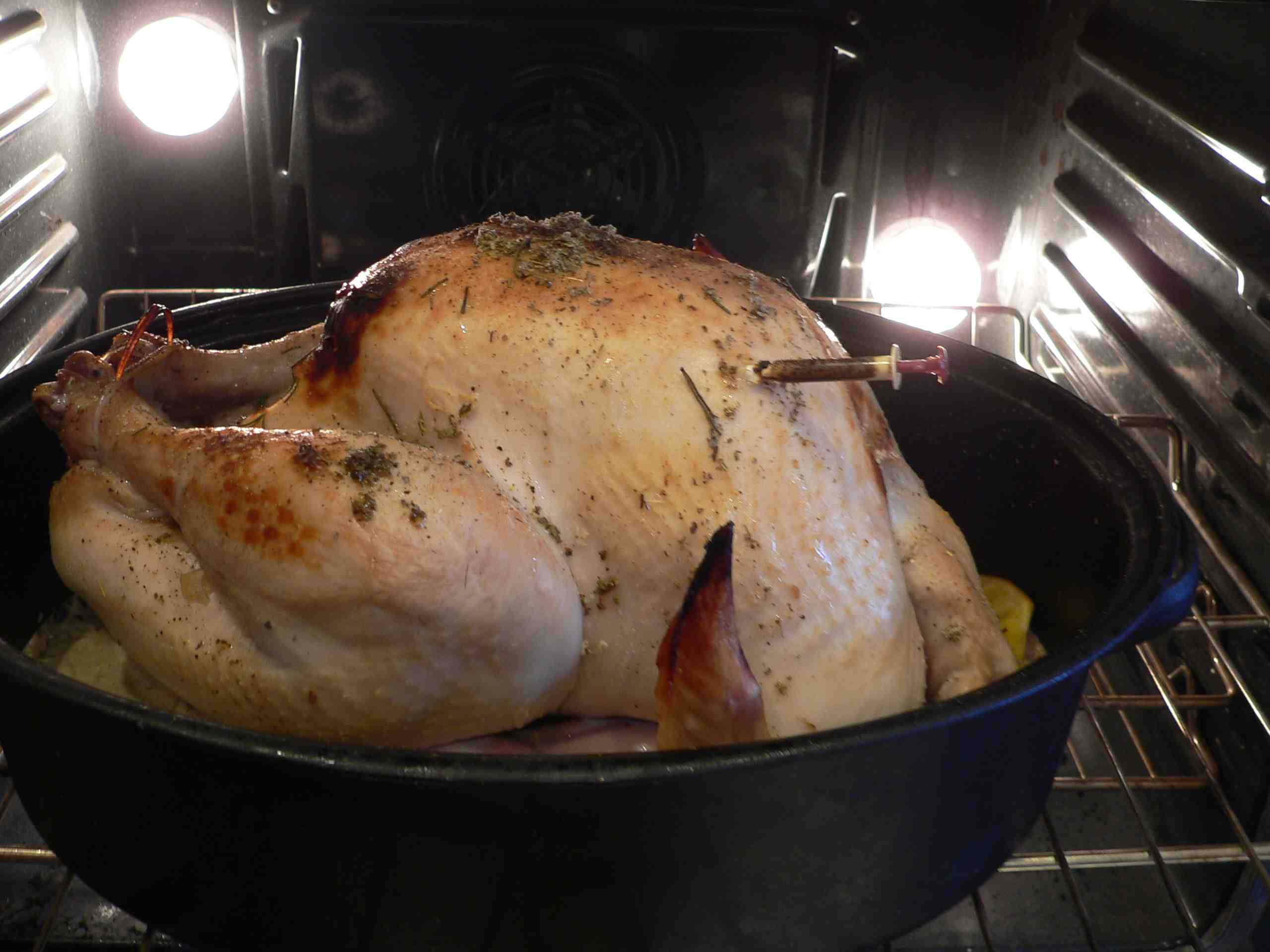I’m in Brisbane one day and I cook a whole chicken and then make stock.
It’s my go-to food.
Back in Manhattan I had a groovy measuring cup similar to the one, right, that easily separates the fat. Overnight in the refrigerator also works (I have 3 containers biding their time in the fridge).
A well-flavored – careful not to over-salt — chicken stock is a key ingredient, not just for soups and stews, but a meal of shrimp and red pepper over rotini, stir-fried veggies, even some kinds of bread.
So when Michael Ruhlman, some sort of cookbook author, said on his blog that he likes to make chicken stock and leave it out on the stovetop all week, using portions day to day to make quick  soups and sauces, Harold McGee of The New York Times decided to check with a real expert: O. Peter Snyder, a food scientist and veteran educator and consultant to the food-service industry, who has at times taken issue with government guidelines he considers unnecessarily conservative.
soups and sauces, Harold McGee of The New York Times decided to check with a real expert: O. Peter Snyder, a food scientist and veteran educator and consultant to the food-service industry, who has at times taken issue with government guidelines he considers unnecessarily conservative.
“The process described by Mr. Ruhlman is a very high-risk procedure,” wrote Dr. Snyder. “It depends totally on reheating the stock before it is used to be sure that it doesn’t make anyone ill or possibly kill them.”
Boiling does kill any bacteria active at the time, including E. coli and salmonella. But a number of survivalist species of bacteria are able to form inactive seedlike spores. These dormant spores are commonly found in farmland soils, in dust, on animals and field-grown vegetables and grains. And the spores can survive boiling temperatures.
After a food is cooked and its temperature drops below 130 degrees, these spores germinate and begin to grow, multiply and produce toxins. One such spore-forming bacterium is Clostridium botulinum, which can grow in the oxygen-poor depths of a stockpot, and whose neurotoxin causes botulism.
Once they’ve germinated, bacteria multiply quickly in nourishing stock. They can double their numbers every 90 minutes at room temperature, every 15 minutes at body temperature. A single germinated spore can become 1,000 bacteria in a matter of hours, a billion in a few days.
As Dr. Snyder put it, “After sitting on the stove and growing bacteria for two or three days, Mr. Ruhlman’s stock almost certainly has high levels of infectious Clostridium perfringens cells, or Clostridium botulinum or Bacillus cereus cells and their toxins, or some combination thereof.”
Why has the Ruhlman family survived? Because Mr. Ruhlman boils the stock before he serves it, Dr. Snyder wrote. Any active bacteria are killed by holding the stock for a minute at 150 degrees or above, and botulism toxin is inactivated by 10 minutes at the boil.
But quickly reheating a contaminated stock just up to serving temperature won’t destroy its active bacteria and toxins, and the stock will make people sick.
In 2008, a 26-year-old Japanese mother in the Osaka region shared a meal of leftover fried rice with her two children, ages 1 and 2. She had prepared and served the rice the day before and kept it at room temperature.
All three became ill 30 minutes after eating the leftovers, and were hospitalized. Both children lost consciousness, and the youngest died seven hours after the meal. Pathologists later reported in the  journal Pediatrics that the rice contained a very common spore-forming bacterium, Bacillus cereus, along with a heat-resistant toxin that the bacterium tends to make on starchy foods, and that can cause vomiting even after being heated to the boil.
journal Pediatrics that the rice contained a very common spore-forming bacterium, Bacillus cereus, along with a heat-resistant toxin that the bacterium tends to make on starchy foods, and that can cause vomiting even after being heated to the boil.
Dr. Snyder agreed that official pronouncements on food safety can be inconsistent and self-defeating. “The F.D.A. Food Code is very conservatively written,” he wrote. “Four hours after it’s cooked is plenty fast enough to get food into the refrigerator.” And slow enough to relax and enjoy the meal.
I’m with Pete.

 soups and sauces,
soups and sauces,  journal Pediatrics that the rice contained a very common spore-forming bacterium, Bacillus cereus, along with a heat-resistant toxin that the bacterium tends to make on starchy foods, and that can cause vomiting even after being heated to the boil.
journal Pediatrics that the rice contained a very common spore-forming bacterium, Bacillus cereus, along with a heat-resistant toxin that the bacterium tends to make on starchy foods, and that can cause vomiting even after being heated to the boil. 15-pound turkeys is that the breast was creeping up to 140-150F, while the stuffing and other parts were languishing at 120. Foil over the breast helps, but it’s always a problem;
15-pound turkeys is that the breast was creeping up to 140-150F, while the stuffing and other parts were languishing at 120. Foil over the breast helps, but it’s always a problem;  a safe temperature in the microwave. The remainder of the bird went back in the oven.
a safe temperature in the microwave. The remainder of the bird went back in the oven..jpg)
.jpg) Specifically, contact with animals in the "Feed the Animals" exhibit on the third floor children’s area of the exposition center was probably where the outbreak originated, according to the extensive 15-page report.
Specifically, contact with animals in the "Feed the Animals" exhibit on the third floor children’s area of the exposition center was probably where the outbreak originated, according to the extensive 15-page report. Sorenne eating lunch with dad, Oct. 4, 2009.
Sorenne eating lunch with dad, Oct. 4, 2009.